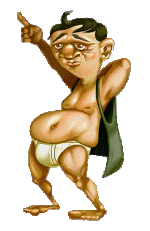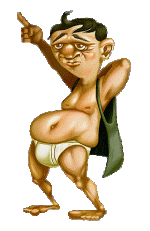Found this article on line. It was published by Coin World.
Female Winged Liberty Head mistaken for male god Mercury
By William T. Gibbs
COIN WORLD Staff
Let's set one fact straight from the very beginning: Adolph A. Weinman never intended his design for the obverse of the new dime introduced in 1916 to represent Mercury, that male, fleet-of-foot, Roman god of messengers. The female visage (there's no hint of androgyny about her portrait, so how she could be mistaken for a male god is a mystery) on the new dime is that of Liberty, her winged cap symbolizing, in Weiman's own words, "liberty of thought," not fleetness of foot.
The Winged Liberty Head dime – popularly though erroneously known as the "Mercury dime" – is considered by many the most attractive U.S. 10-cent coin.
Weinman's dime was issued during the renaissance of U.S. coinage design, which began in 1907 and 1908 with the new gold designs; continued in 1913 with the Indian Head 5-cent coin; and reached its zenith in 1916 with stunning new designs for the dime, quarter dollar and half dollar.
The introduction of the 1916 Winged Liberty Head dime prompted nearly universal praise from the coin collecting community. Weinman's designs were instantly recognized as brilliant.
There are no truly rare dates in the Winged Liberty Head dime series, although there are some scarce die varieties that are not essential for a date and Mint mark set.
If the figure on Adolph A. Weinman's dime isn't Mercury, who was she? She was Elsie Kachel Stevens, the young wife of poet Wallace Stevens, was Weinman's model.
Wallace and Elsie Stevens rented rooms in a house owned by Weinman. The artist-sculptor asked Elsie to pose for a sculpture bust about 1913. She agreed.
Weinman used his bust of Elsie Stevens as a model for the dime, when he began designing it in 1915. A profile photograph of the bust shows the obvious inspiration for the dime.
Unfortunately, the whereabouts of Weinman's bust is unknown. It disappeared after Wallace Stevens' death, and after their daughter declined to accept it as a gift from her mother.
One thing collectors should be aware of is the large numbers of Winged Liberty Head dimes with machine doubling, especially in the date area. Machine doubling is caused by a mishap in the minting process and while considered collectible by a few, generally adds no premium to a coin. Machine doubling should not be mistaken for doubled die doubling.
Two doubled die varieties are among most desirable coins. The most significant die varieties in the series are the 1942/1 and 1942/1-D Winged Liberty Head, Doubled Die dimes, commonly called overdates.
The coins are not overdates in the traditional, pre-20th century sense (i.e., no one punched the numeral 2 over the numeral 1 in the date). Instead, they are doubled dies, just like the famous 1955 and 1972 Lincoln, Doubled Die cents.
The two varieties were created when two dies, one intended for the Philadelphia Mint and the other for Denver, were impressed first with a hub dated 1941, and then impressed a second time with a hub dated 1942.
Winged Liberty Head dime
Date of authorization: April 2, 1792
Dates of issue: 1916-1945
Designer: Adolph Weinman
Engraver: Charles Barber
Diameter: 17.91 mm/0.71 inch
Weight: 2.50 grams/0.08 ounce
Metallic content: 90% silver, 10% copper
Weight of pure silver: 2.25 grams/0.07 ounce
Edge: Reeded
Mint mark: Reverse left of base of fasces (bundle of rods)
 , not to bad!! for about 45 min. old toy gun, my brother found the name tag,
, not to bad!! for about 45 min. old toy gun, my brother found the name tag, must be a dog collar tag,also a bullet ,maybe 38,dont know what the item below the gun barrel is
must be a dog collar tag,also a bullet ,maybe 38,dont know what the item below the gun barrel is  , was in mill shoals il. any body ever heard of that one??
, was in mill shoals il. any body ever heard of that one??  how about you dean!!!! ever heard of mill shoals
how about you dean!!!! ever heard of mill shoals
 , not to bad!! for about 45 min. old toy gun, my brother found the name tag,
, not to bad!! for about 45 min. old toy gun, my brother found the name tag, must be a dog collar tag,also a bullet ,maybe 38,dont know what the item below the gun barrel is
must be a dog collar tag,also a bullet ,maybe 38,dont know what the item below the gun barrel is  , was in mill shoals il. any body ever heard of that one??
, was in mill shoals il. any body ever heard of that one?? 



![P1000165 [800x600].webp](/data/attachments/291/291610-73e0e2b2745c45e5bba9c057943c57c4.jpg?hash=ShWHY-qjN8)

 RR
RR



